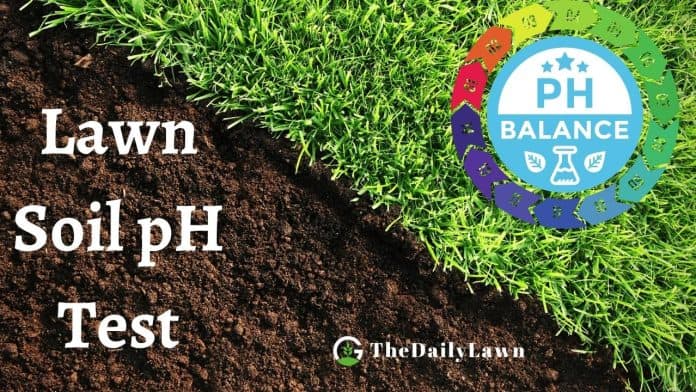A neighbor was having trouble improving the intensity of his lawn grass. He was trying to apply fertilizers, but nothing was working. In the end, a well-wisher told him to try a lawn soil pH test and take the necessary steps to improve it.
However, my neighbor was not well aware of soil pH, so he came to me to learn about it. At that time, I realized that many people don’t have enough idea about this fact. Even most of them don’t know how much important it is to check the soil pH level on the lawn.
Testing the soil pH is not enough; you have to take the necessary steps to fix it if you have problems with your lawn. I suggest you check this content from the beginning to the end. You will definitely learn almost everything about the lawn soil pH. Let’s start with a proper introduction to the lawn soil pH.
What is Soil pH?
 The soil on your lawn can have a level of acidity or basicity. In science, this level is known as the soil’s pH level. In agriculture science, the soil pH is a significant fact as it helps treat and choose the right fertilizer for the plants.
The soil on your lawn can have a level of acidity or basicity. In science, this level is known as the soil’s pH level. In agriculture science, the soil pH is a significant fact as it helps treat and choose the right fertilizer for the plants.
Not just for your garden plants, the right pH level is essential for your lawn. Soil’s pH also indicates the health of the lawn as well. With the lawn soil pH test result, you can choose the right fertilizer and nutrients.
Besides, the pH of the soil is considered as the key characteristic when analyzing the soil’s quantitative and qualitative features. So, when you want to check the amount of any particular nutrient in the lawn soil, you must go for the lawn soil test.
Why Is the Proper Lawn Soil pH Important?
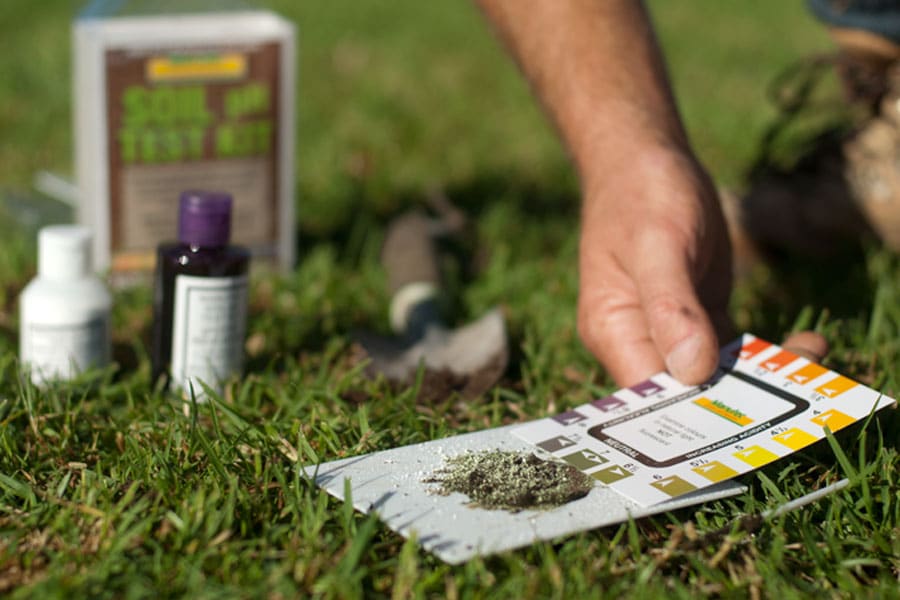 Lawn owners often do not give enough attention to the proper soil pH. Maintaining the soil pH is so crucial that without it, you may end up exterminating nearly 20 to 70 percent of the lawn fertilizer nutrients.
Lawn owners often do not give enough attention to the proper soil pH. Maintaining the soil pH is so crucial that without it, you may end up exterminating nearly 20 to 70 percent of the lawn fertilizer nutrients.
The Lawn soil pH level is exigent for growing a green lawn. Normally, The pH scale ranges from 1 to 14, and a pH of 7 is neutral. If the soil has less than seven on the scale, it indicates it is acidic. In opposition, a pH that is more than seven ensures that the soil is alkaline or basic.
A lawn generally propagates the best when the soil pH is between 6.2 to 7.0, which refers to slightly acidic to neutral. Additionally, you need to remember that small changes in pH scale can have a deadly effect on your grass bed. It happens because the pH scale is logarithmic; thus, the pH scale of 4 is ten times more acidic than the pH scale of 5.
Besides, you need to know the right pH level to identify any diseases like dollar spots on your lawn. Choosing the right fertilizer is highly dependent on the soil pH as well. So, it is very important to know the soil pH level. Indeed, ignoring it is one of the common lawn care mistakes people often make.
Ways to Determine the Lawn Soil pH with DIY Testing Kit
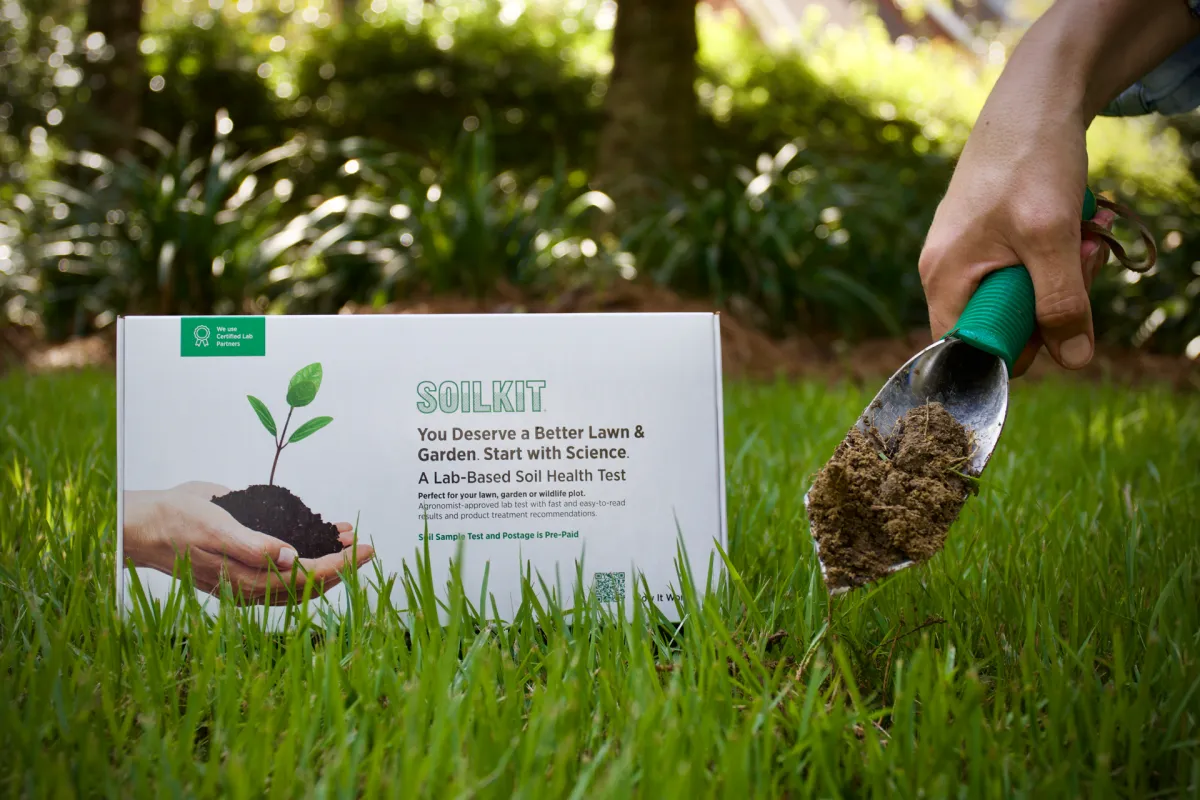 There are many high-priced soil pH testing meters that are available in markets. But people most of the time, don’t go for that as they are costly. If you are not interested in investing in a pH meter, you can try a DIY testing kit. Though the DIY soil testing kit is not widely used, it is very convenient and easy to use.
There are many high-priced soil pH testing meters that are available in markets. But people most of the time, don’t go for that as they are costly. If you are not interested in investing in a pH meter, you can try a DIY testing kit. Though the DIY soil testing kit is not widely used, it is very convenient and easy to use.
Step 1: Collect and Check the Kit
First, you will find a test tube and a powder capsule in the kit box. You will also find a pH range chart. Make sure all the equipment is there in your hand.
Step 2: Point Area to Pick Soil
Once you collect the kit, you have to pick soil from at least four locations on the lawn. Choosing a shady area, a sunny area, a weedy area, and a bare spot is highly suggested.
Step 3: Soil Collection
As you select the area, you have to use a lawn trowel or spoon and dig one inch to take a sample out of it. The method is the same for the other three areas as well.
Step 4: Mix the Soil
At this point, you need to mix all four samples together to prepare an average sample. You can take them in one container and shake them properly. The better you mix the soil, the more appropriate result you will get.
Step 5: Mix Capsule Powder with Soil Sample
Now, remove the cap of the tube and open the capsule packet. Now, fill the test tube to the first line with the representative sample. Open the capsule carefully and mix the powder into the tube. Then comes adding distilled water proximate to the fourth line on the tube.
Step 6: Check the Color in the Chart
In the final step, replace the cap, mix all the components thoroughly, and wait another 5 minutes to settle it down. Now, compare the color of the liquefaction looking up to the color chart on the card. The exact color you get from the test will tell you the right pH of your soil.
This is how you can try the DIY soil test at home to learn the right soil pH on your lawn. This kind of test cannot possibly give the utmost accurate result. Still, you will get instant results with this kind of test that is near to be appropriate.
Laboratory Lawn Soil pH Test
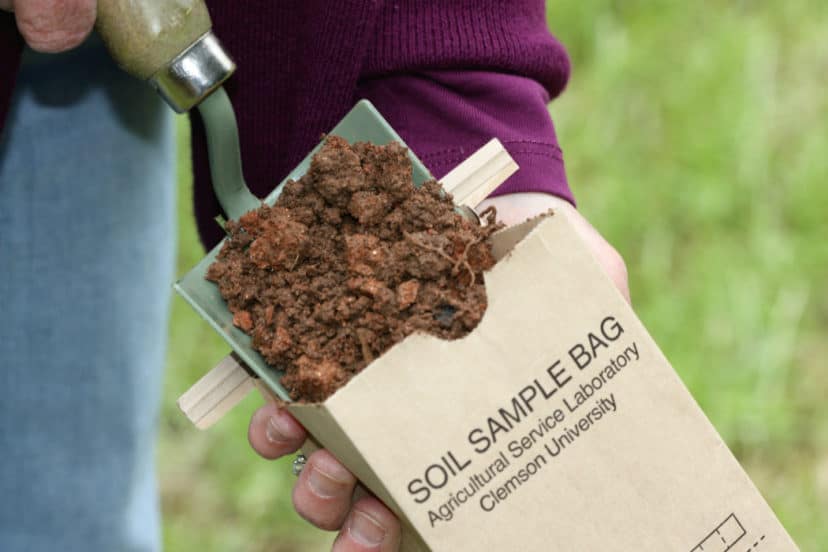 As you know, that DIY test kit cannot give you the appropriate result; there is another way for that. You must try the Lab test for a hundred percent accurate result. And it is also easy for sure. But you have to visit the laboratory for that.
As you know, that DIY test kit cannot give you the appropriate result; there is another way for that. You must try the Lab test for a hundred percent accurate result. And it is also easy for sure. But you have to visit the laboratory for that.
First, you have to find out the place where people conduct the soil test. You can talk to the government agriculture office to know where people do this job. Besides, you can talk to the agriculture shop to learn about it. Also, you can search on Google Map writing “Soil test near me” to get the lab’s location.
However, when you apply for a soil test, they will give you a sample bag where you have to put soil from different points on your lawn. You can take soil from eight to ten different places from your lawn and mix them up properly. Next, fill the sample bag and give it to the lab for the test.
They will take a few days or weeks to test the soil. After they finish, they will send you a report saying everything about the soil on your lawn. Not just the pH level, this test will reveal almost every piece of information about your lawn. Also, it is more accurate than any other test. That’s why we suggest going for the soil test at least once a year.
How to Improve pH in Acidic Soil?
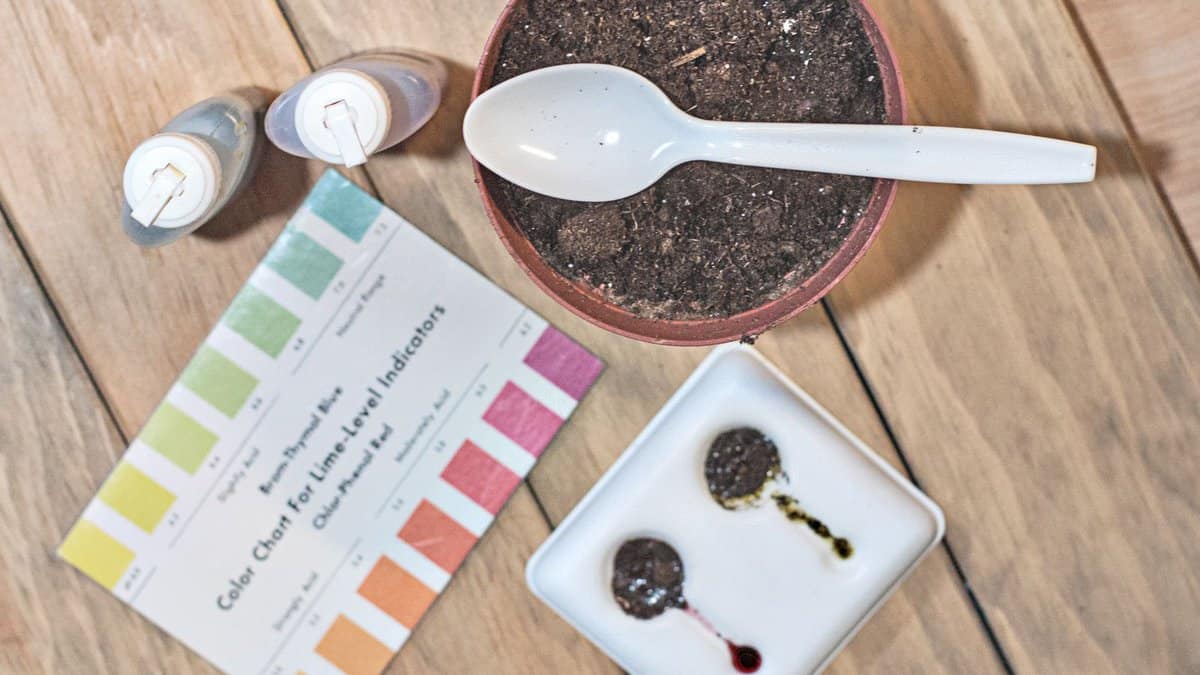 Lawn soil can sometimes be too acidic or alkaline, preventing the plants from absorbing proper nutrients. It will eventually result in the shrinking of your lawn. The ideal pH for lawn grasses is 6.5, which refers to a little on the acidic scale.
Lawn soil can sometimes be too acidic or alkaline, preventing the plants from absorbing proper nutrients. It will eventually result in the shrinking of your lawn. The ideal pH for lawn grasses is 6.5, which refers to a little on the acidic scale.
Too much-acidified soil carries a greater risk for your lawn soil. And to raise the pH, you can apply limestone, which is very effective in making it less acidic. Generally, There are two types of limestone, and these are dolomitic limestone and calcitic limestone. The liming products are in hydrated, granular, pelletized, and pulverized forms.
The pelletized or granular types tend to spread easily but take longer to break down. Both Pulverised and hydrated are faster-acting. There is a warning in this case; make sure to pair the lime with fall watering or core aeration.
In addition, mixing wood ash is an organic way to improve the acidic scale of your soil. You only need to spread half an inch of wood ash and assemble it into the soil approximately a foot deep. Indeed it is very effective, but the method takes several years to fix the acidity level.
How to Decrease pH in Alkaline Soil?
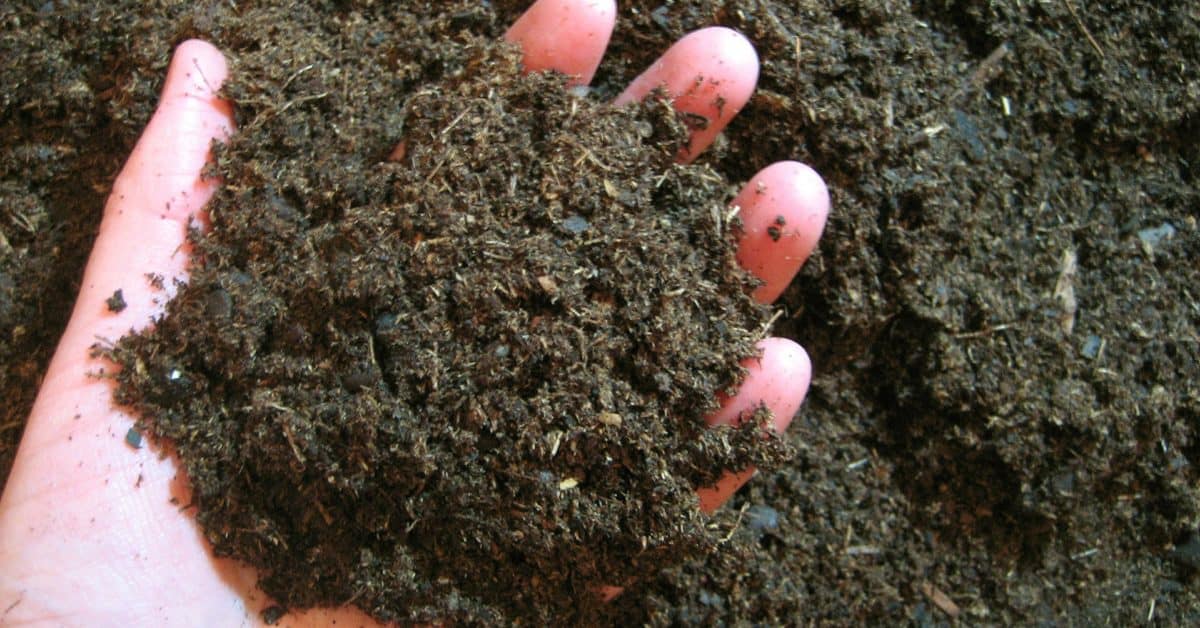 Balancing the lawn soil’s alkalinity is crucial. But, you don’t have to worry if it rises above the normal 6.5 pH scale. You should worry when it rises more than 7. Indeed, you have to take the necessary steps to decrease the soil pH.
Balancing the lawn soil’s alkalinity is crucial. But, you don’t have to worry if it rises above the normal 6.5 pH scale. You should worry when it rises more than 7. Indeed, you have to take the necessary steps to decrease the soil pH.
Sulfur, one of the common soil elements, is commonly used to make the soil acidic. Moreover, it is cheaper and safe, and you can easily spread it on the surface of the soil. The important note is you should not apply over 2 pounds per 100 square feet contemporary.
Likewise, sphagnum peat is an excellent organic solution for your lawn soil and compensates for water retention. You only need to make a 2-inch layer of this organic matter into your soil, necessarily a foot deep. And you may need a tiller for larger areas.
Aluminum sulfate and iron sulfate are fast-acting. But they can sometimes cause a disaster if they contain noxious elements that can mold the soil. Plus, you should never apply more than five pounds per a hundred square feet at a time.
Some other fertilizers have ammonia, amino acid, or urea in it and can easily acidify the soil on your lawn. Plus, the routine use of mulches and organic compost will help the soil pH to get nearly to the slightly acidic or neutral level. However, the most significant way to lower your soil pH is to keep piling on the rotten stuff and believe in mother nature.
FAQ
Q: What is the appropriate lawn soil pH?
A: The level of pH from 6.5 to 7 is the appropriate soil pH for your lawn. 7 is the neutral number of levels. If it is less than 7, it must be acidic soil; if it is more than 7, it is alkaline. So, the idea pH indicates the soil should be neutral or a little bit acidic.
Q: How does lime affect the lawn soil pH?
A: Lime is a very effective nutrient for increasing the soil pH. That means if the soil is more acidic, you can use lime to raise the pH and reduce its acidity.
Q: Can baking soda increase soil pH?
A: Yes, baking soda is widely used to increase the soil pH. That means it helps increase the alkalinity of the lawn soil. But you have to use it in the appropriate way. You have to mix it with water and apply it evenly on the lawn.
Q: How long will it take to raise the pH level of the lawn soil?
A: The time your lawn soil will take to increase the pH level depends on the process you are using for it. Using sufficient and appropriate fertilizer will be faster but not in less than six months. Otherwise, it can take years to fix the pH naturally.
Q: Does the DIY pH test kit provide appropriate results?
A: Yes, the DIY soil test kit provides an almost appropriate result of the pH level. But it is not as appropriate as the lab test. But it is a very convenient and widely used way to test the soil pH.
Final Verdict
If you didn’t skip any part of this article, you would know what lawn soil pH is and what to do to fix it. But what I would love to say before I leave is never ever ignore this fact. It can lead you to have a dead lawn because of choosing inappropriate fertilizer.
Especially when your lawn is suffering from any deadly disease, testing the soil pH is even more essential to find the right treatment. Even if your lawn has no problems, you should test the soil’s pH level at least twice a year. It will be helpful to keep your lawn safe from future problems.
Hopefully, you got what I am trying to say. An inappropriate pH level is not a joke for your lawn and just remember this fact always. Let’s say goodbye today, and we will definitely come back with something essential for your lawn. Thank you a million folds for your patience.
